Brown v. Board
Local Artist Creates Mural to Commemorate the Landmark Case, Brown v. Board of Education of Topeka
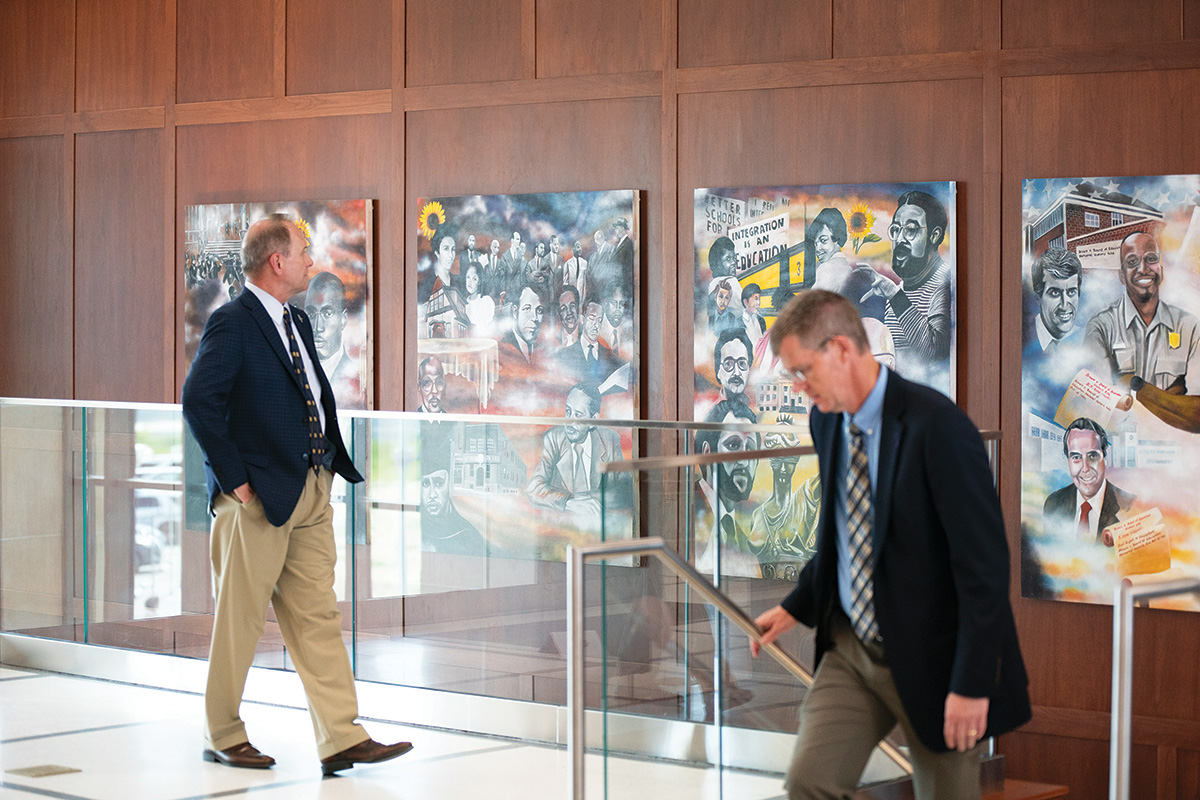
The four-paneled mural, "Non Nobis Solum," was commissioned by Washburn to be hung in the new School of Law building and commemorate Washburn's role in the Brown v. Board case and other civil rights battles. Photo by Nick Krug
From Washburn Lawyer - Winter 2024
By Sarah Towle
When Robert J. Dole Hall was opened in July, the prominent mural representing the history of the Washburn University School of Law and its relationship to Brown v. Board of Education of Topeka was also unveiled.
The mural, commissioned by Washburn Law with the support of generous donors, was completed by Kansas City-based artist Michael Toombs. Its title, “Non Nobis Solum,” represents Washburn’s motto of not for ourselves alone.
“Washburn University School of Law was a pioneer in offering legal education to all,” said Jeff Jackson, BBA ’89, JD ’92, interim dean, Washburn Law. “I am proud to have received my education here and to help lead this institution into the future, a future made brighter by its rich history and impact on civil rights. This one-of-a-kind piece showcases the history of Washburn School of Law and the role Washburn lawyers played in advancing this landmark case, and I hope it inspires the next generation of lawyers.”
Toombs, who worked on the project, wishes to thank former Dean Carla Pratt, Jackson, and his own wife Marcia Pomeroy. He did extensive research while completing the mural. He said the foundation and thread through each painting is the surreal spirit of the historical times, where the realist paintings are embedded into the emotion of the sky. While the mural depicts the history and effects of the Brown v. Board decision, Toombs said it starts with Ichabod Washburn’s vision of financially saving an institution that believed it was important to educate people of color and women.
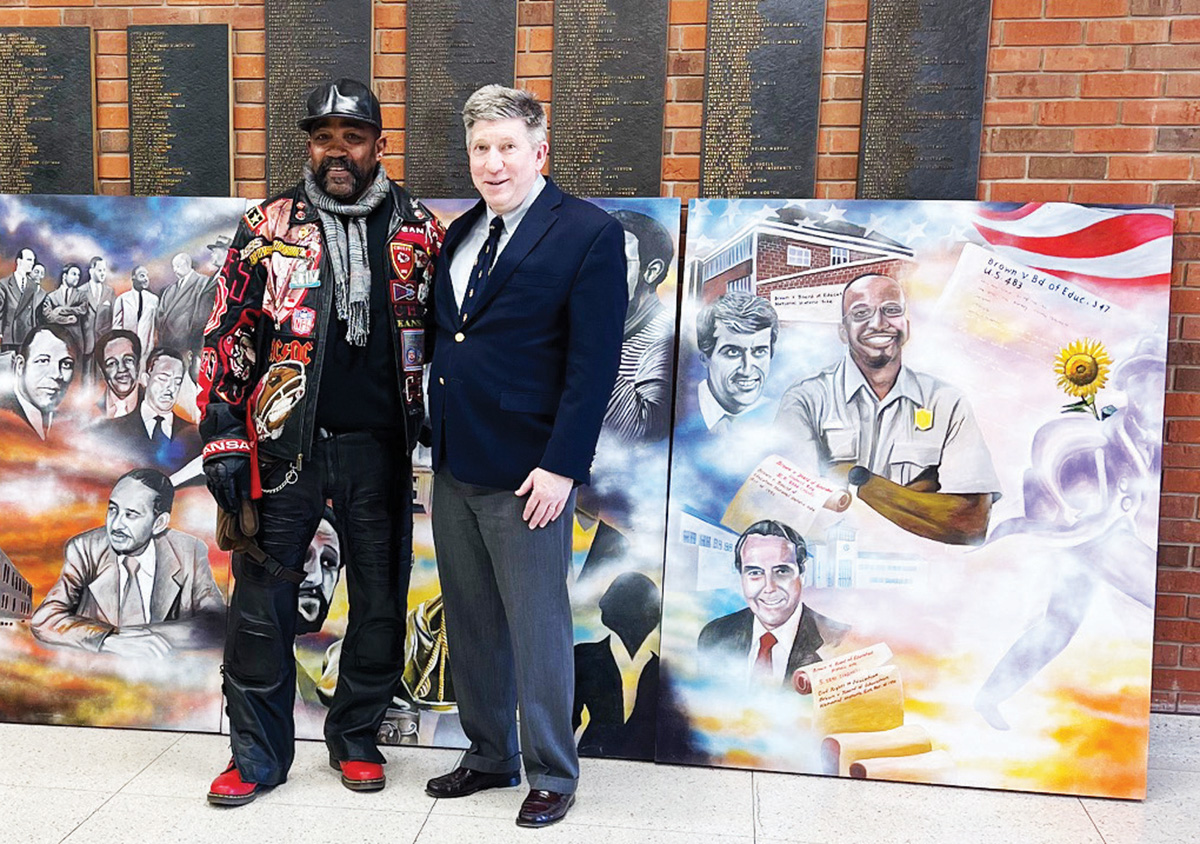
(Artist Michael Toombs [left] poses with School of Law Dean Jeff Jackson. Photo submitted)
“Ichabod Washburn had such a powerful vision, and I don’t think he ever got a chance to internalize the impact of what he was trying to do,” Toombs said. “Laying the foundation for the future is what Washburn himself originally hoped for when he decided to support the college, and it was the kernel of inspiration that resonated through out all four panels of the mural.”
The mural hangs in the central staircase of the new building and each panel reflects an important snapshot of the history of Brown v. Board.
Panel 1 – The Birth of Integrated Education in Topeka, Kansas
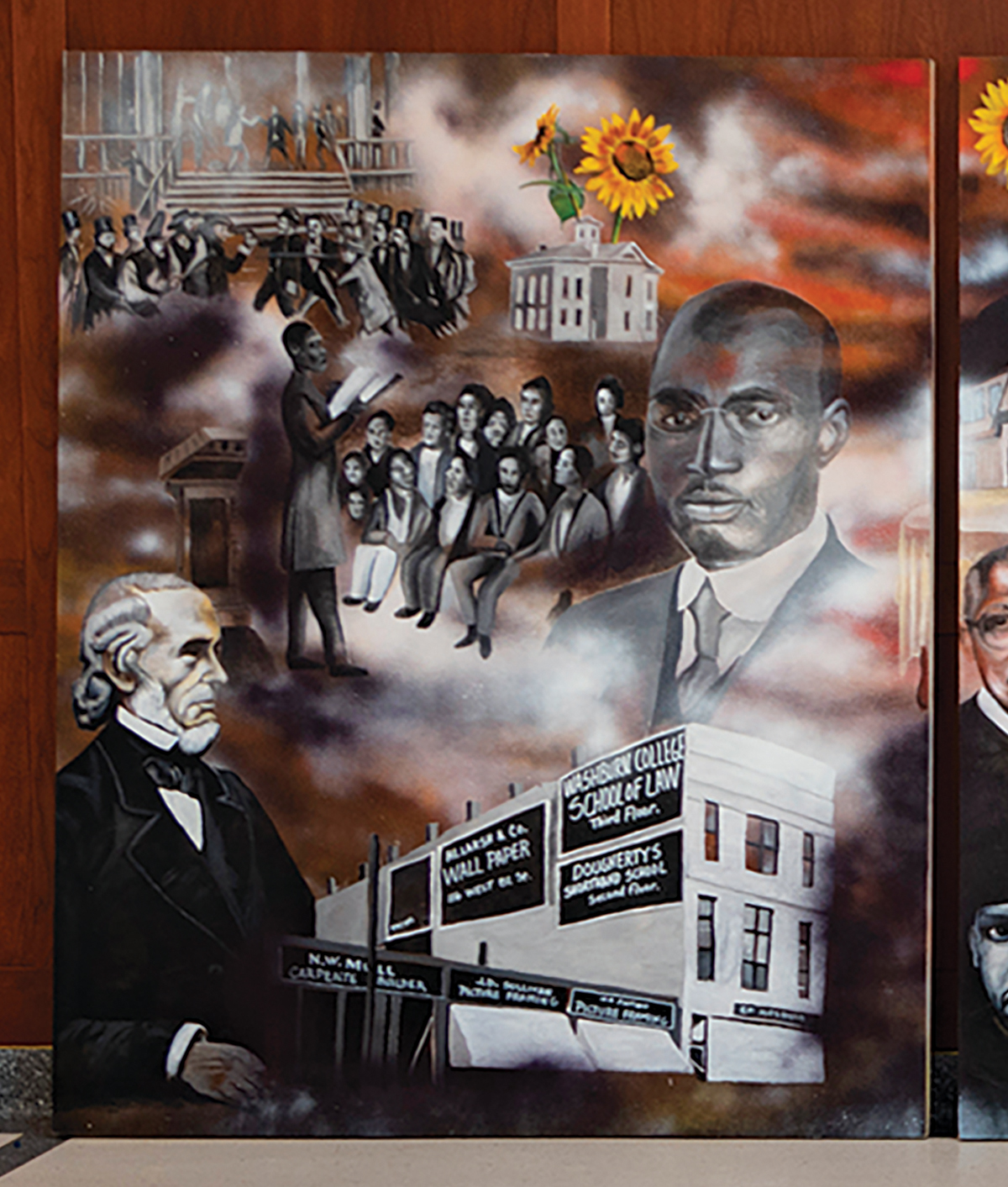
The first foundation panel reflects the time between 1850 and 1916. It is a partial dark and disturbing sky representing the anti-slavery and pro-slavery forces in 1850. This part of the panel carried through the Civil War to 1865. The lighter skies represent transitioning to the educational visions of the freedman and scholars and the beginning of Lincoln College celebrating the ending of slavery. Ichabod Washburn – a Congregationalist deacon, industrialist, and abolitionist back East – was the donor whose generous gift allowed the social and educational mission of Lincoln College in Topeka to thrive. He died before ever setting foot on the campus, but the college was renamed Washburn College and later Washburn University in his honor, and in 1903, a law school was established in Topeka that also bore this benefactor’s name. Like its namesake, Washburn University School of Law made a central part of its mission “the creation of a more just society.”
Panel 2 – The Challenge to Racial Segregation
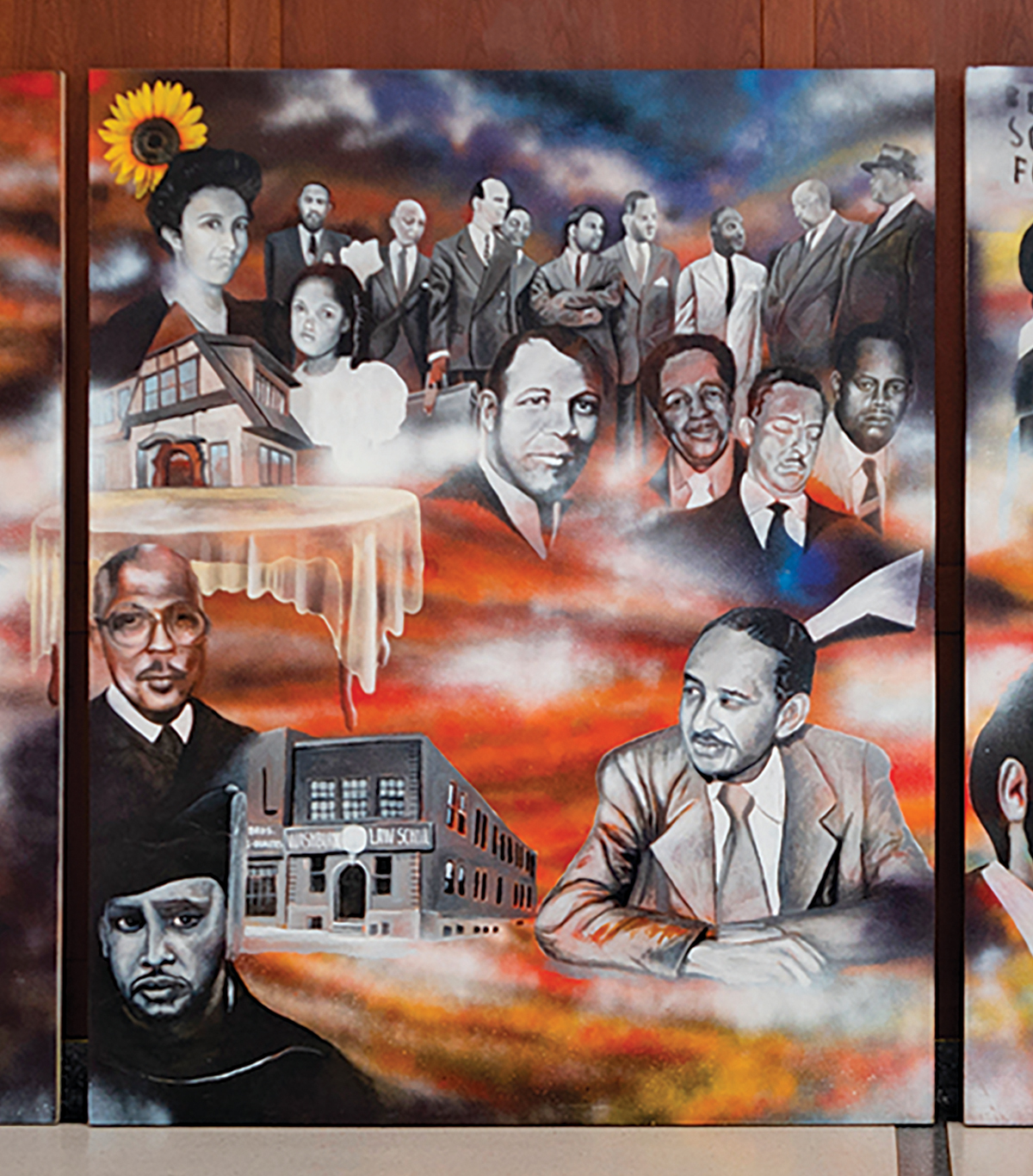
The foundational sky of the panel shared the dark and disturbing colors but began to open with blue at the top and a brighter yellow toward the bottom of the panel. This embedded painting shows one of the 13 plaintiff families in Brown v. Board, Lucinda Todd, and her young daughter, Nancy. Lucinda and her nephew, Paul Brady, BBA ’51, JD ’56, H ’04, were pro-integration activists in Topeka. They, and many others, met each evening around Todd’s table, a symbol in the painting of the community working together. Her involvement in the Brown v. Board case at the federal district court of Topeka inspired Brady to attend Washburn Law, and he became the first Black federal administrative law judge. Elisha Scott, shown on the first panel, was one of the first three Black Washburn Law graduates, earning his degree in 1916. His sons, Charles, ’48, and John, ’47, Scott, were also educated at Washburn Law as well as Charles Bledsoe, and all worked on the Brown case. They lost their case in the United States District Court for the District of Kansas and appealed directly to the United States Supreme Court. The case was eventually heard there with lead attorney, Thurgood Marshall, arguing the case for the plaintiffs. Loren Miller, BA ’24, JD ’28, represented in the painting, was the lawyer who wrote an appellate brief for the case. Sherman Parks, Sr., BBA ’49, JD ’55, the highest ranking Black judicial officer and the first Black appellate judge in Kansas, is also depicted in the painting.
Panel 3 – Enforcement of the Supreme Court’s Decision in Brown v. Board Holding that Separate Education is not Equal
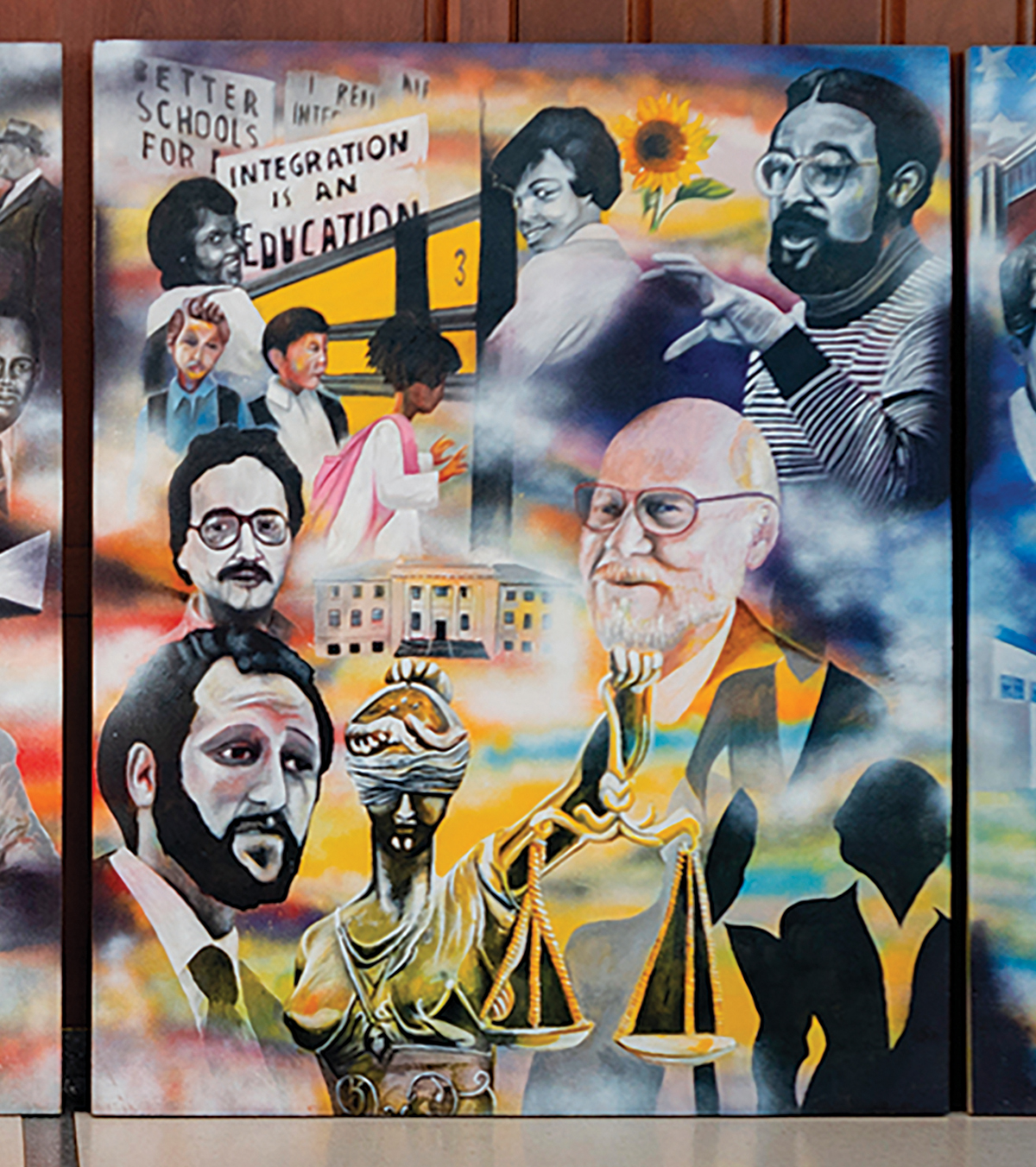
The foundational sky is turning from darkness into light, pastel colors bringing a bright environment for the next phase after the successful completion of the U.S. Supreme Court’s Brown v. Board case, decided in favor of the plaintiffs. This next phase was the enforcement case, called “Brown II,” in which the federal district courts are empowered by the Supreme Court to order local school districts to desegregate and integrate local public schools. Washburn Law faculty helped with the enforcement in Topeka Public Schools. The faculty members depicted are Bill Rich, Ron Griffin, Myrl Duncan, and Allen Easley. Many lawyers from around the country also participated and are depicted throughout the panel. Enforcement included busing children of color to schools that had been all white schools previously.
Panel 4 – History is Made in Topeka
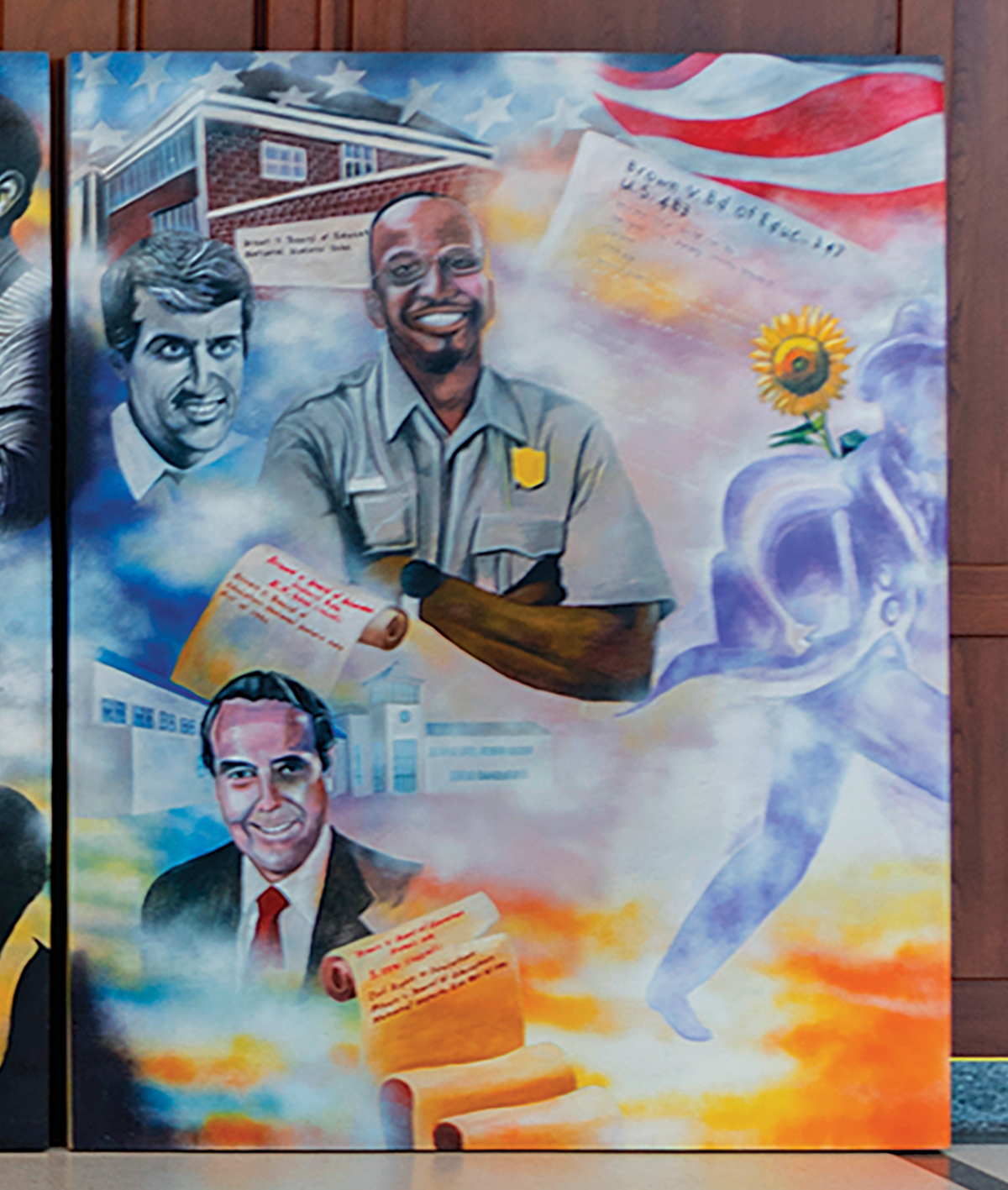
The foundational sky of the panel shows the promise in its bright sky embedded with the hope of never repeating the mistakes of the past as we move into the future. Washburn Law alumni worked to get the national park site in Topeka to commemorate the decision and to teach history to all who come to Kansas to visit. Jim Slattery, BA ’70, JD ’75, was in the United States House of Representatives, representing the 2nd District of Kansas, when he introduced the House bill that created the National Park Service site in Topeka. Sen. Robert Dole, BA ’52, JD ’52, H ’69, H ’85, was in the Senate at the time and introduced a Senate bill to secure the Brown v. Board of Education National Historical Park in Topeka. National Park Service Ranger Dexter Armstrong, shown on this panel, was an employee of the site and represents the evolving status of people of color. There is an intentional lack of density in this panel, which Toombs said is symbolic of the open-ended future yet to come with the hope of continued freedom for all. The spirit of Ichabod Washburn is walking toward the future.